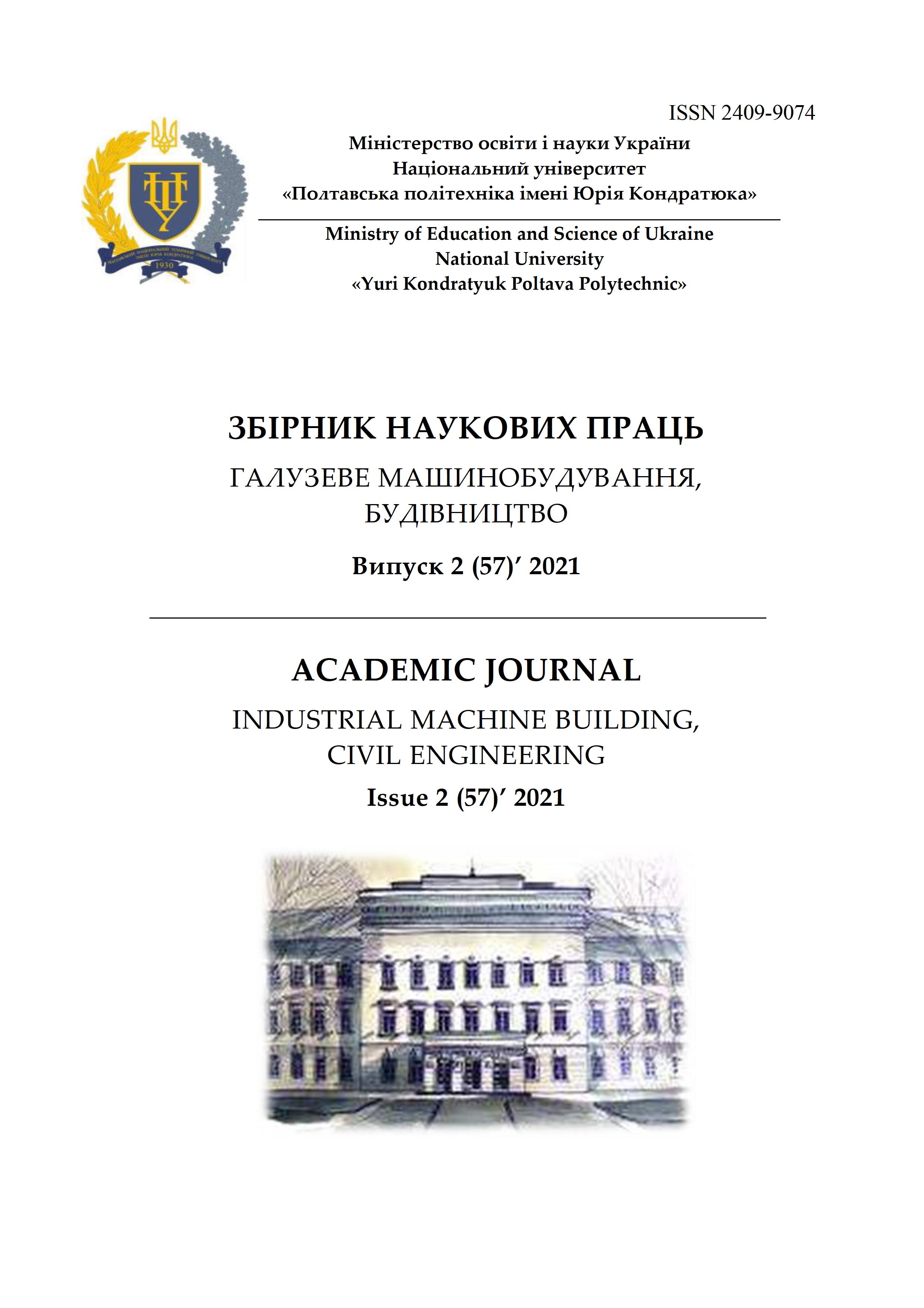Previous self-stresses creation methods review in bent steel reinforced concrete structures with solid cross section
DOI:
https://doi.org/10.26906/znp.2021.57.2589Keywords:
self-stress, steel-concrete composite structures, construction, nodes, technologyAbstract
Bent steel reinforced concrete structures are usually structures for overlap or covering buildings and constructions for various functional purposes. Pre-stresses in structures of this type can be created by installing additional pre-stressed reinforcing bars in the stretched cross-sectional area, which, along with increasing the load-bearing capacity and stiffness of the floors, requires additional material costs and the installation of these bars. Creating initial stresses in building structures from their own weight greatly simplifies the process of pre-stressing due to the unnecessary cost of additional measures and adaptations. Preliminary stresses, in this case, can be created due to the well-chosen sizes of the nodes and the development of technology for the preliminary assembly of building structures. Therefore, the purpose of research is to generalize the design features and principles of bent reinforced concrete structures with solid cross-section parts pre-stressing and separation among them and to develop new effective methods of creating pre-self-stresses - pre-internal stresses opposite to those arising during operation
References
Pavlikov A.M., Mykytenko S.M., Hasenko A.V. (2018). Effective structural system for the construction of affordable housing. International Journal of Engineering & Technology, 7(3.2), 291-298
http://dx.doi.org/10.14419/ijet.v7i3.2.14422 DOI: https://doi.org/10.14419/ijet.v7i3.2.14422
Semko O.V., Hasenko A.V. (2021). Monolithic slab of steel-reinforced concrete floors spans optimization, Abstracts of the XIX International scientific-practical conf. "Innovative technologies in construction, civil engineering and architecture". Chernihiv, 289-290
Chekanovich M.G., Chekanovich O.M. (2010). Research of reinforced concrete beams executed in the form of interconnected pulls and extensions strengthening design work. Resource-saving materials, constructions and structures, 20, 65-72
Chekanovych M.G., Chekanovych O.M., Zhurahivskyi V.P. (2014). Strength of steel-reinforced concrete beams reinforced by a lever-rod system. Industrial mechanical engineering, construction, 3(42), 227-231
Chekanovych O.M. (2009). Patent Ukraine 87047. Regulated pressed reinforced concrete beam. Kyiv: Ukrainian Institute of Intellectual Property
Richard W. (2010). Patent US 7,748,180 BI. Joist stiffening system. Japan Sciences and technology Agency, Sultama
Jiang De A. (2013). Patent CN 102936965. Method for strengthening reinforced concrete beam through distributed external prestressing cables. Japan Sciences and technology Agency, Sultama
Toshiaki Ohta, Fukuok (2006). Patent US 7,056,463B2. Method of manufacturing prestressed concrete. Japan Sciences and technology Agency, Sultama
Chekanovych M.G., Chekanovych O.M., Zhurahivskyi V.P. (2016) Reinforcement of reinforced concrete beams with an external rod and roller system. Resource-economic materials, constructions, buildings and structures, 34, 413-420
Chekanovych M.G., Boyko M.M., Haydabura S.K., Bezrodnya V.E. (2016) Bearing capacity of reinforced concrete beams, International scientific-practical conf. materials «Prospective directions for the development of water management, construction and land management». Kherson: PP LT-Office, 379-382
Malganov A.I., Plevkov V.S. (2002). Restoration and strengthening of enclosing building constructions, buildings and structures: a textbook
Izbash M.Yu. (2008). Locally forward-stressed steel-and-concrete structures for new life and reconstruction. (Аutoref. diss. for the degree of Doct. Tech. Sc.) Kharkiv National University of Civil Engineering and Architecture, Kharkiv
Izbash M.Yu. (2011). Direct design of operated uncut multi-span steel-reinforced concrete beams reinforcement. Cities utility management, 100, 425-434
Izbash M.Yu. (2008). Reducing costs of prestressed reinforcement in locally pressed steel-reinforced concrete bent structures. Utility management of cities, 81, 15-23
Chikhladze E.D., Verevicheva M.A. (2009). Evaluation of the load-bearing capacity of reinforced concrete columns with a square cross-section under the axial load action. Herald of DonNABA, 4, 71-76
Al-Lahham M. (1996). Locally prestressed bent elements of the sprengel type. (Аutoref. diss. for the degree of PhD) Kharkiv National University of Civil Engineering and Architecture, Kharkiv
Shagin O.L., Spirande K.V., Al-Lakham M. (1995). Selection of local prestress level in prefabricated monolithic structures. Bulletin of technical information, 2, 16-20
Kushnir Yu.O. (2012). Experimental studies of steel beams reinforced strength with horizontal ties. Communal management of cities, 105, 168-179
Kushnir Yu.O., Pents V.F. (2013). Selection of optimal reinforcement of pre-stressed steel-reinforced concrete beams normal rectangular section based on a deformation model. Building structures, 78-2, 78-84
Bibyk D.V., Semko V.O., Voskobinik O.P. (2011). Patent Ukraine 61921. Steel-reinforced-concrete cross-section cover beam. Kyiv: Ukrainian Institute of Intellectual Property
Semko O.V., Bibyk D.V., Voskobiynyk O.P., Semko V.O. (2011). Experimental studies of a steel-reinforced concrete beam with a span of 13.5 m. Resource-economic materials, constructions, buildings and structures, 21, 323-330
Downloads
Published
How to Cite
Issue
Section
Published 2022-09-16




